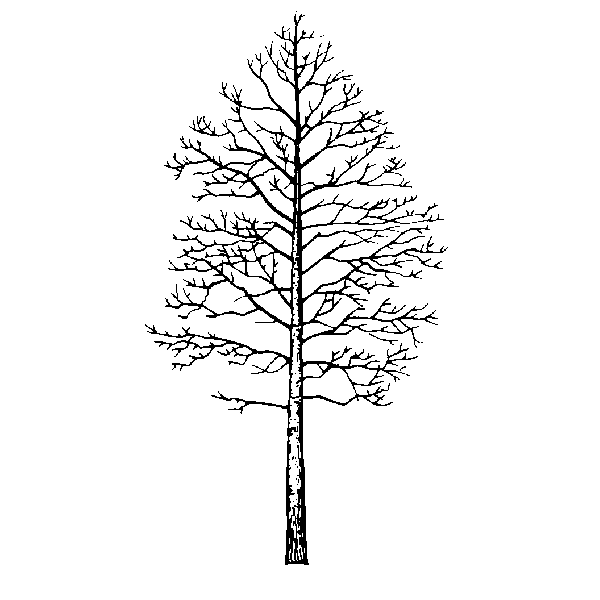Coming-into-being
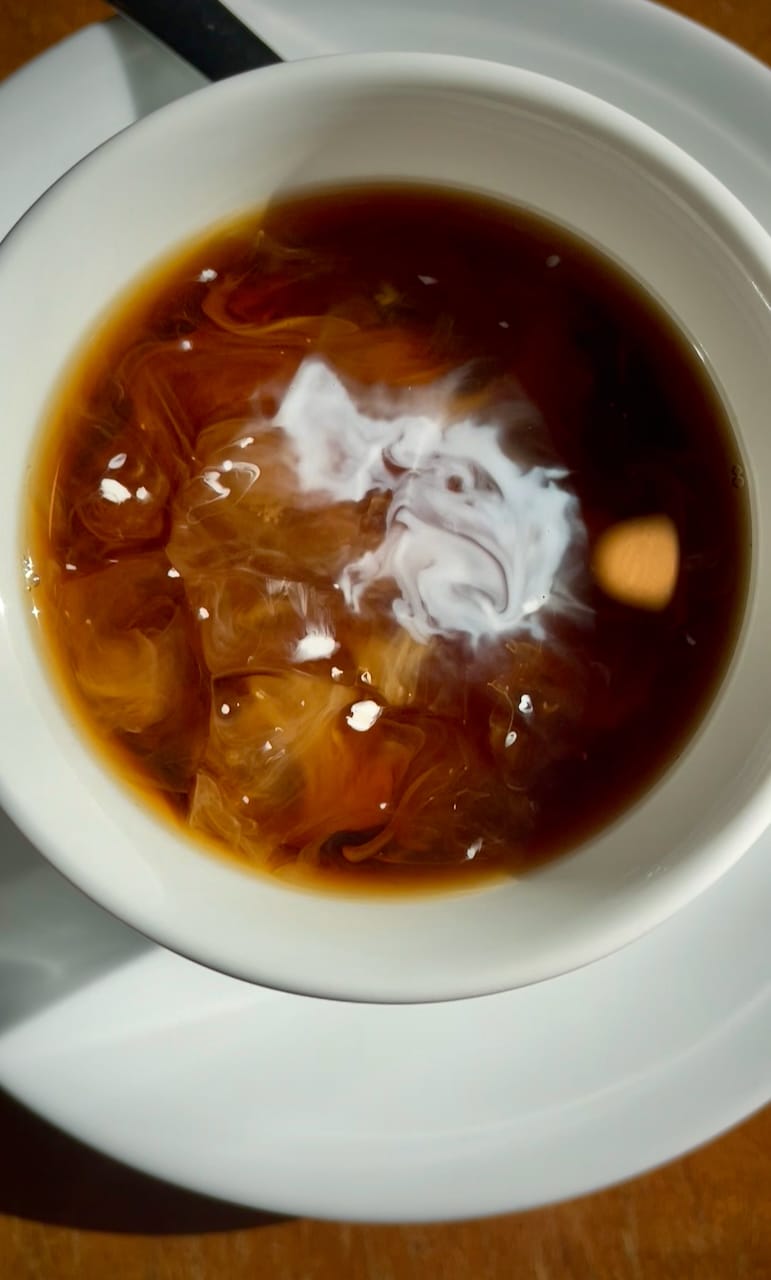
Trembling Aspen | Series 04_My Life Here | Issue_07
I'm on a zoom call with my friend Akshay. Night time for me, early morning for him. “It was one of the most mystical experiences of my life,” I said. Then I caught myself. “Well, what does that even mean? How can it be the most mystical.”
“Yes! This right here," Akshay added, "us on this zoom call, is a mystical experience.”
The mystical experience to which I was referring happened a few years ago. It was an experience in which I unexpectedly and suddenly saw the beautypain-ness of everything around me. The most mundane objects, the name of a freind, the music I was listening to... it was all just so obviously, inherently beautypain-ful. Full of light and dark, full of unresolvable paradox, full of mystery. It was as though an additional colour of the spectrum suddenly appeared and was now visible in everything I looked at. It was as though seeing had spontaneously replaced my mere looking. In response, welling up within me was what I can only call gratitudegrief. The only available response to the beautypain-ful-ness all around me, in everything. That glimpse of a-realtiy-I-don’t-typically-pay-attention-to is with me now, folded into me. I don’t always see the way I saw, but the experience of seeing changed me, is part of me.
Within the most mundane moments are contained the mysteries of the universe.
What we might call a mystical experience simply reveals the unseen-by-way-of-negligence reality that we are in and of at all times. By mystical I don’t mean magical, or sentimental. I mean imbued with mystery, containing unresolvable paradox, bearing the light and dark of the human experience. Beautypain, as I’ve come to call it. Like spacetime makes more sense as one word, beautypain makes more sense as one word. So too does gratitudegrief.
In the same afore mentioned conversation Akshay said he would like to become more aware of whether he is coping or healing. Reading Trembling Aspen, he said, is healing for him. The most healing thing isn’t necessarily reading it. It’s him picturing me sitting in a coffee shop writing. Not so much me writing about Source, but me living, acting, creating through Source. Him imagining me being an expression of Source.
When you’re coping versus healing, you get out of centre, away from Source. So you might need to read about someone talking about Source, so you can get back to Source. Once you’re centred again, you can be an expression of Source again. Write, draw, make, create. Me being my unique expression of Source helps him be his unique expression of Source. (I’m paraphrasing Akshay, but that’s the gist. After the call I wrote in my journal "Am I coping or healing?" Feel free to do the same.)

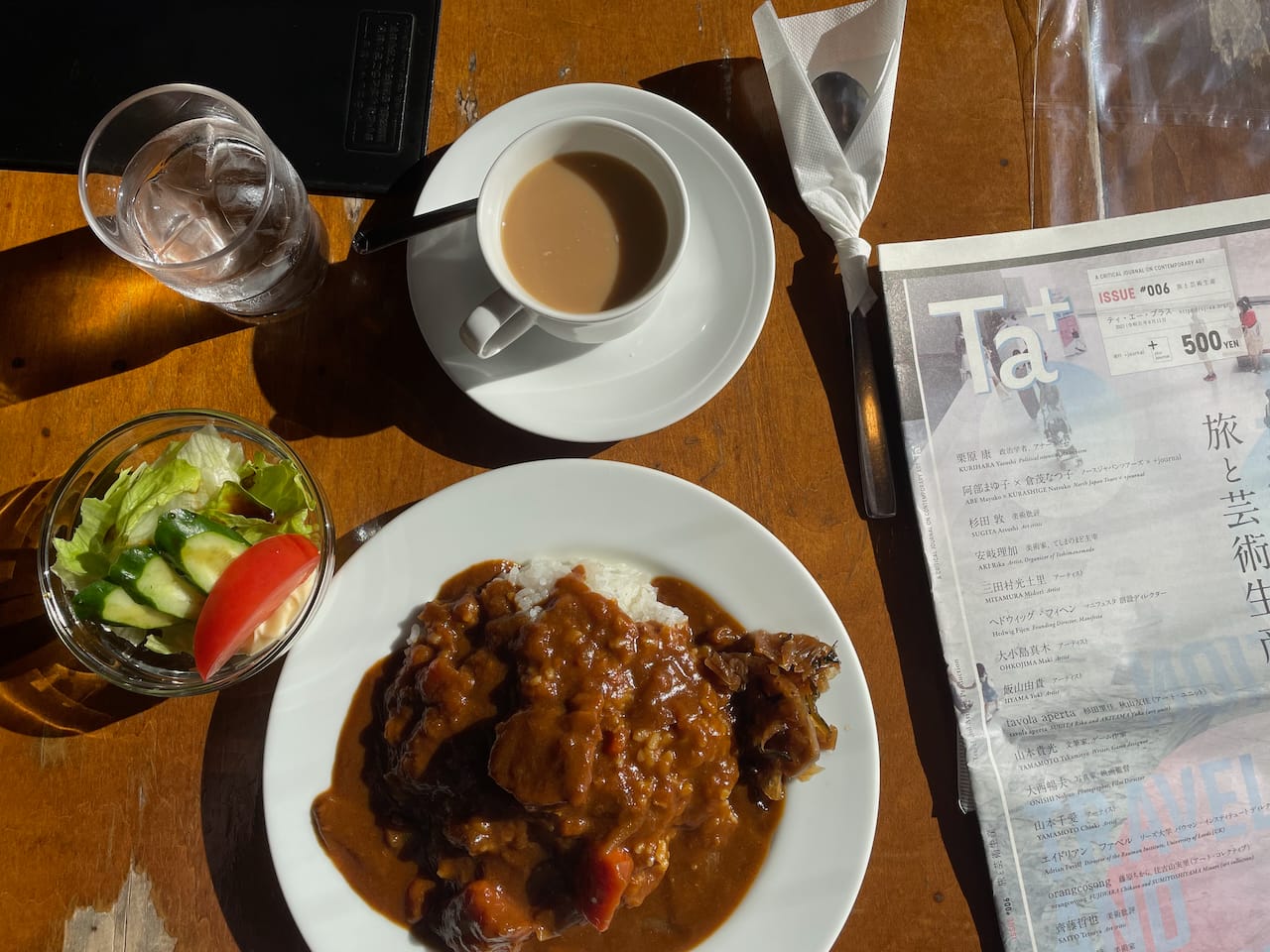
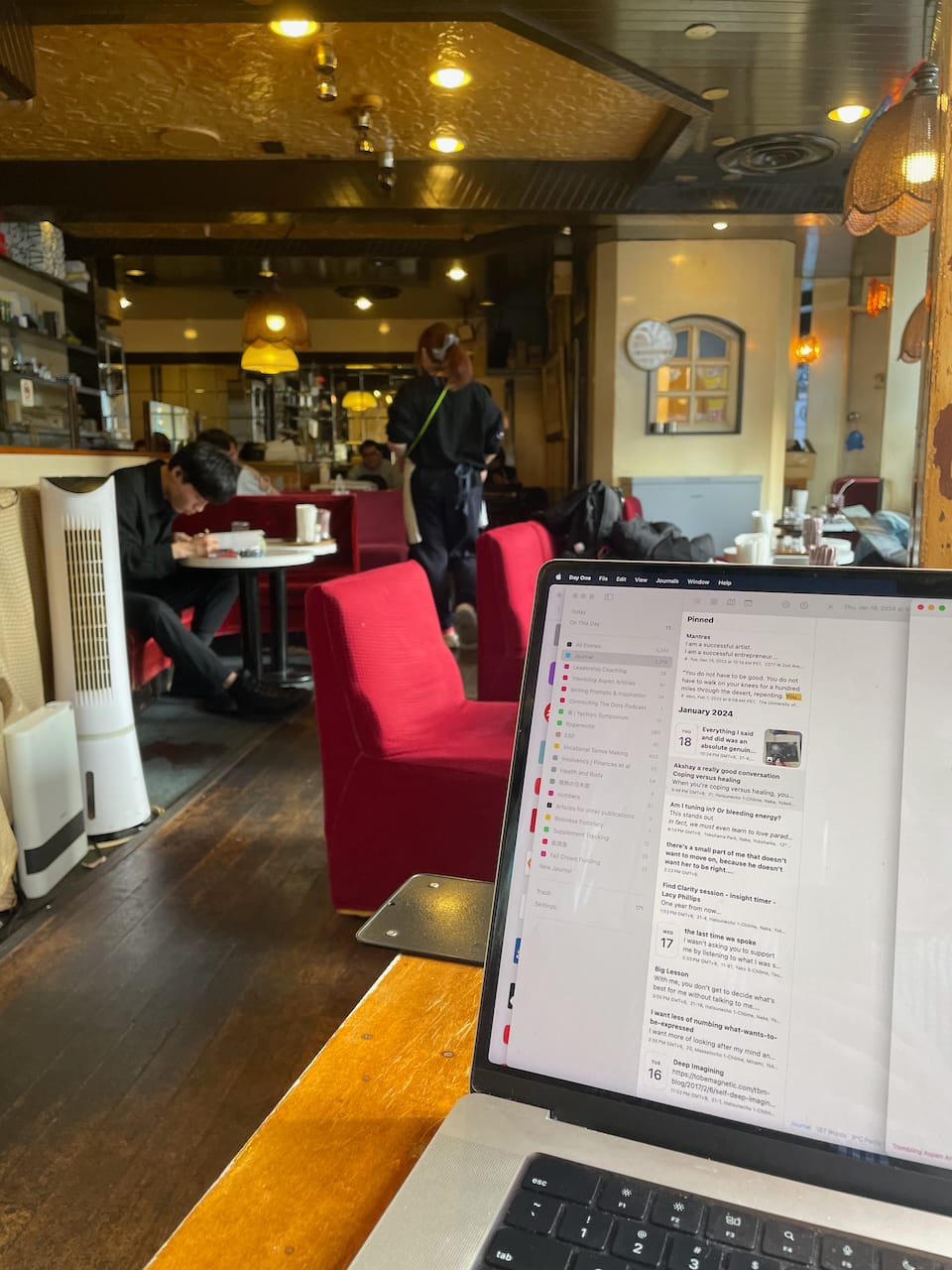
I’m in a kissaten, near Shinjuku, in Tokyo. I followed intuition to get here. The nearby bookshop I was headed to was temporarily closed, and I had just found out I don't need to get back to Yokohama for 4:00pm. The afternoon open up spaciously before me. I’d let intuition guide me. Did I find the best kissaten? No idea. Doesn’t matter. No stars required to know the pork curry was delicious and fortifying ($10CAD). Likewise, no stars required to know that the mixture of an old, weathered, character infused interior along with a young staff and clientele all listening to j-pop is unrepeatable anywhere else in the world.
I had a loose plan for today. Come to Tokyo, look for a book and write. Is that what I should be doing? Is it the best use of my time? What else should I be doing? After the conversation with Akshay last night I felt free to simply be in Source. Just go write, and enjoy the work of it. I felt fee to move and respond to the world around me with loosely held plans, open to serendipity, welcoming of what-is so as to be the unique expression of me in the world. Whew. I think I can do that. Yeah, I think I can do the things I love, in one of the most endlessly interesting cities in the world. And it's not an indulgence. I’m helping Akshay heal.
Seriously. Think about that. Think about the freedom of it—and please for the sake of the planet and everyone around you, find this for yourself. Sitting down to create is the healing. For you, and anyone aware of the fact that you are doing it. Whatever gets made is bonus. I don’t think I’ve ever encountered anything more positively, freeingly motivating.
I put the finishing touches on supplementary material for the GratitudeGrief Quilt proposal last night. As promised, I’ll copy and paste it below, and that’ll be that. I’ve been in Source. I’ve helped Akshay heal. Whatever lands in your inbox is bonus.
Koganecho Bazaar 2024�
Open Call for Exhibition Plan : Proposal �
Purpose of this project �
The Gratitude Grief Quilt is a project to make a traditional hand made quilt with folks of all generations from the Koganecho neighbourhood of Yokohama, Kanagawa, Japan; the Downtown Eastside neighbourhood of Vancouver, Canada and the community at Ishiisanchi Care Home in Yachiyo, Chiba, Japan. (Additional workshop locations around the globe are possible, and being worked on.) �
The project envisions three phases. Phase 1: Making panels. Phase 2: Making The Quilt. Phase 3: Sleeping under the quilt.
The GratitudeGrief Quilt is representative of the paradox of beauty/pain. That is, even in painful moments and amongst difficult circumstances, beauty exists. Equally, life’s most beautiful moments are often bittersweet for their fleeting and ephemeral nature. Life is full of these beauty-pain paradoxes, they are two sides of the same coin, always present and inherent in the human condition.
The appropriate and perhaps only response to beauty-pain is gratitude-grief. Sleeping under the quilt is an act of gratitude-grief. It is a defiant act of non-action, a paradoxical act of surrender for the sake of release, and regaining one’s agency and power. Those who sleep under the quilt are collectively overcoming pain by choosing to acknowledging the beauty in each other’s story. They affirm the strength of the human spirit, and the power of collective action.
Phase 1: Making Quilt Panels
Through a series of workshops to take place in KocoGarden, participants will be asked to design and create a 15x15cm cloth panel that symbolizes either gratitude or grief that they would like to express.
I hope to have a minimum of 150 panels created. (Enough to create a 75x150cm quilt during Phase 2)
Ariane Mercier-Beau (current Koganecho AIR), Mishio Mochida Jacques (current Koganecho AIR) will assist participants in embroidery and/or appliqué techniques.
Similar workshops will be held in the month of February in Yachiyo, Chiba and Vancouver, Canada.
About Quilting
A quilting bee is a group sewing gathering, historically within a small community, where people contributed communal labour to sew a single quilt.
Quilts require intricate and skilled stitching, and are an expression of the quilter’s stories. Often many individual stories and expressions, in the form of small panels, are gathered together and sewn into one quilt. The quilt becomes the shared stories of a community.
In Canada, quilting bees were activities that socially “knit” a community together. Quilts required a lot of time to make. Further, the time spent around a quilt required a kind of manual labour that left one free to converse. Thus, the quilters—often mothers and grandmothers—who were gathered around the quilt talked and chatted and spoke freely. In small towns and cities, these informal conversations were an invaluable source of information, knowledge and skill sharing. At the same time, quilters often shared their personal lives and offered collective emotional support. In this way, quilting bees knit the social fabric of a community together.
Conceptual Intent
The GratitudeGrief Quilt is about embodied presence.
Whereas my concept of embodied presence draws mostly on the Wisdom traditions—particularly Christian Mysticism, North American Indigenous spirituality and non-dual meditative and contemplative practice—it is also informed by an ethnographic approach as well as the emerging field of embodied cognition in which body, world, perception and action are dynamically related with each other.
While the GratitudeGrief Quilt project isn’t a research project per se, it is in alignment with Ayaka Yoshimizu’s auto-ethnographic approach to the “emplacement" she experienced while in Koganecho researching her doctoral thesis. My approach is resonant with this snippet from her thesis:
“When I speak of my emplaced body, I do not assume I am an independent, separate and autonomous subject “bombarded by sensation-inducing sensory stimuli from the external environment” (Ingold 2011a, p.314) or a body under control who acts on the surface of the furnished world (Ingold 2008, p.1799) but see myself as part of those “strands” that are entangled with each other to constitute the “continual coming-into-being” of place (p.1797). In other words, I have been part of the transformative processes of making of the places of my research.” Yoshimizu, Ayaka. After Displacement. Pg 45, 46
The GratitudeGrief Quilt project is the result of—and made possible by—my embodied presence in Koganecho, in which I am emplaced and entangled. In a non-trivial way, the genesis of this project would not have been possible had I not been in residence in Koganecho, and if KocoGarden had not happened. In other words, this project is only possible by way of my continual coming-into-being happening in this place at this time.
Embodied Presence. The threads of my informal auto-ethnographic story.
During the Koganecho International Artists Network Special Talk, held in October 2023, I was asked what I envision for the future of KocoGarden. I answered that I hoped the spirit of KocoGarden would carry on and travel around the world in the hearts and minds of everyone who had been a part of KocoGarden. My collaborator, Ness, summed it up with the word KocoRoGarden (ココロガーデン). Whereas “Koco” (short for Kogenco and community) is a play on the Japanese work ここ(here), KocoRo is a play on the Japanese word for heart (心), pronounced kokoro. The collaborators who grew KocoGarden hoped the spirit of KocoGarden would be carried in the hearts and minds of everyone who was part of it, and that what they carried with them would grow more art and community around the world.
I, like every other KocoGarden participant, carry the spirit of KocoGarden in my heart. Thus, I view The GratitudeGrief Quilt as a natural extension KocoGarden, which was a natural outcome of my continual coming-into-being in Koganecho.
From KocoGarden Journal: Art is a verb
Everything that happened in KocoGarden, the conversations and connections, the hospitality and welcome, all of it came from the collective imaginations of the people in KocoGarden. But more than that, KocoGarden came from the collective actions of the people in KocoGarden. Talking, listening, serving, helping, eating, offering, receiving, drawing, writing, painting, playing, drinking, singing, resting, simply coming inside.
During the summer of 2023, all kinds of different people gathered in KocoGarden for all kinds of different reasons. Every time they gathered, and every time they did something when they gathered, because they had stepped into a participatory art project, whatever they did, became art.
Art is a verb.
Picking up the threads
While in Koganecho, I experienced Ariane Mercier-Beau’s sewing workshop in KocoGarden. It was during this workshop that I learned and practiced embroidery for the first time. Because I was in Koganecho and because KocoGarden existed, I experienced the satisfaction of learning to embroider, which made it possible for me to imagine Koganecho neighbours experiencing the same thing. Embroidery was in my heart and on my mind.
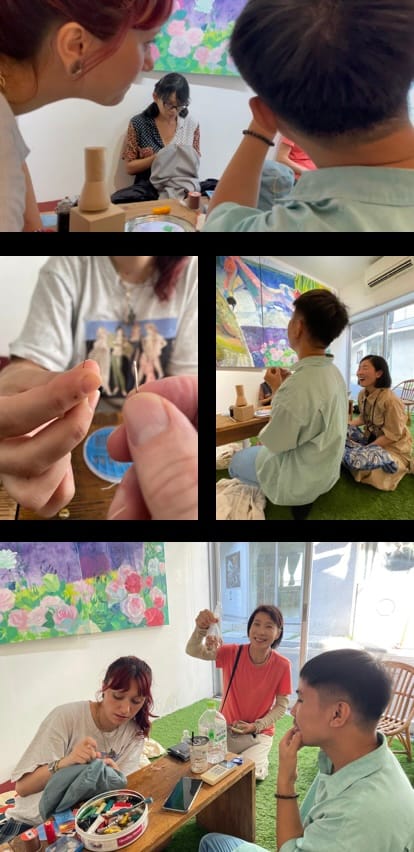
While in Koganecho, I created an installation called The Listening Post, in which I used the Enso Quilt to facilitate listening to guests who came into KocoGarden. I created the Enso Quilt with my mother. Quilting is an activity typical among Canadian women my mother’s age. The quilt brings together distinctly Japanese components—i.e. the character 無 and an enso, both important to my philosophy of everyday life—and a traditional Canadian quilt. The quilt is, in some ways representative of me. My life is a patchwork quilt of experiences that is continually coming-into-being, day by day. Because I was in Koganecho, and because KocoGarden existed, I had an opportunity to reflect upon quilts and their symbolic significance to me. Quilts were in my heart and on my mind.
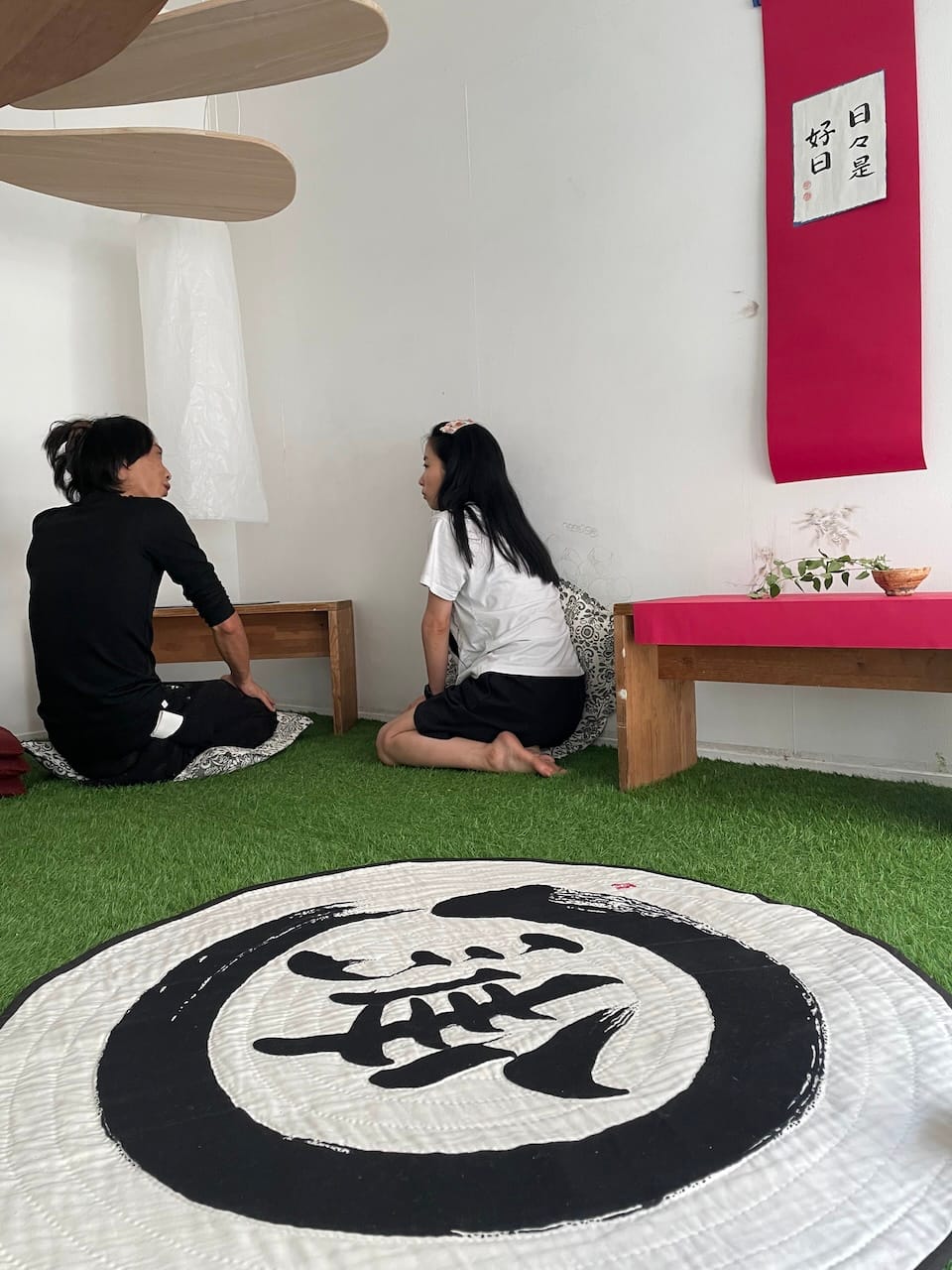
While in Koganecho, during Koganecho 2023 Fall Bazaar, I experienced and participated in the work of Ming Jing Yu, who documents people sleeping in positions and locations of their choice. Because I was in Koganecho, I experienced the artistic and symbolic power of sleeping bodies. Sleeping bodies were on my mind and in my heart.
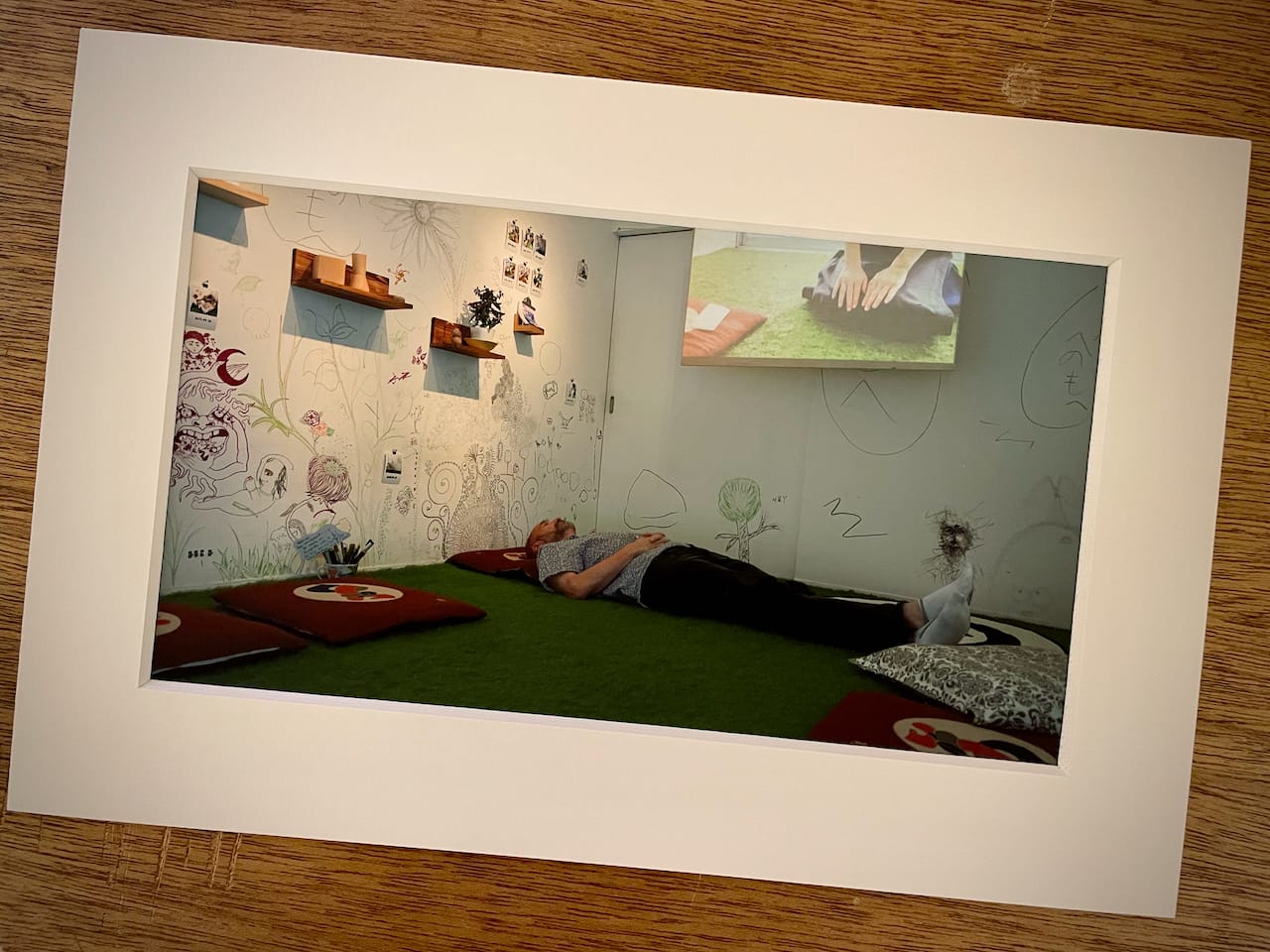
After Koganecho 2023 Fall Bazaar, I briefly interviewed Koganecho AIR artist Yuri Miauchi, and Ming Jing Yu regarding their collaborative performance. I heard how KocoGarden and discussions had there were key to the artist’s initial spark of inspiration to collaborate together. I was inspired by the way the collaboration naturally and fluidly unfolded, as well as by the performance itself. Because I was in Koganecho, and because KocoGarden existed, I had an opportunity to be inspired by a collaborative performance and the way it unfolded in freedom and spontaneity. Collaboration was in my heart and on my mind.
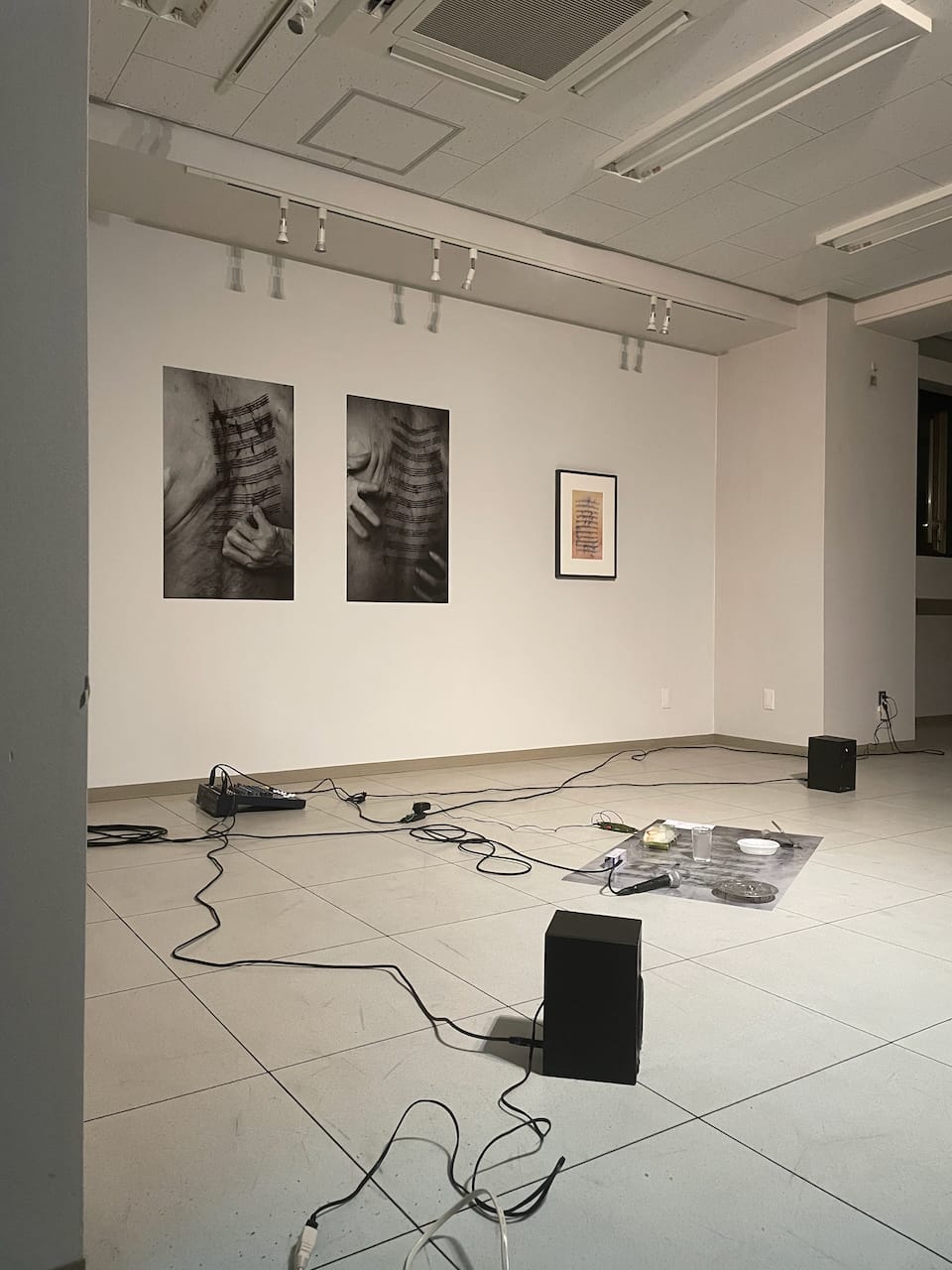
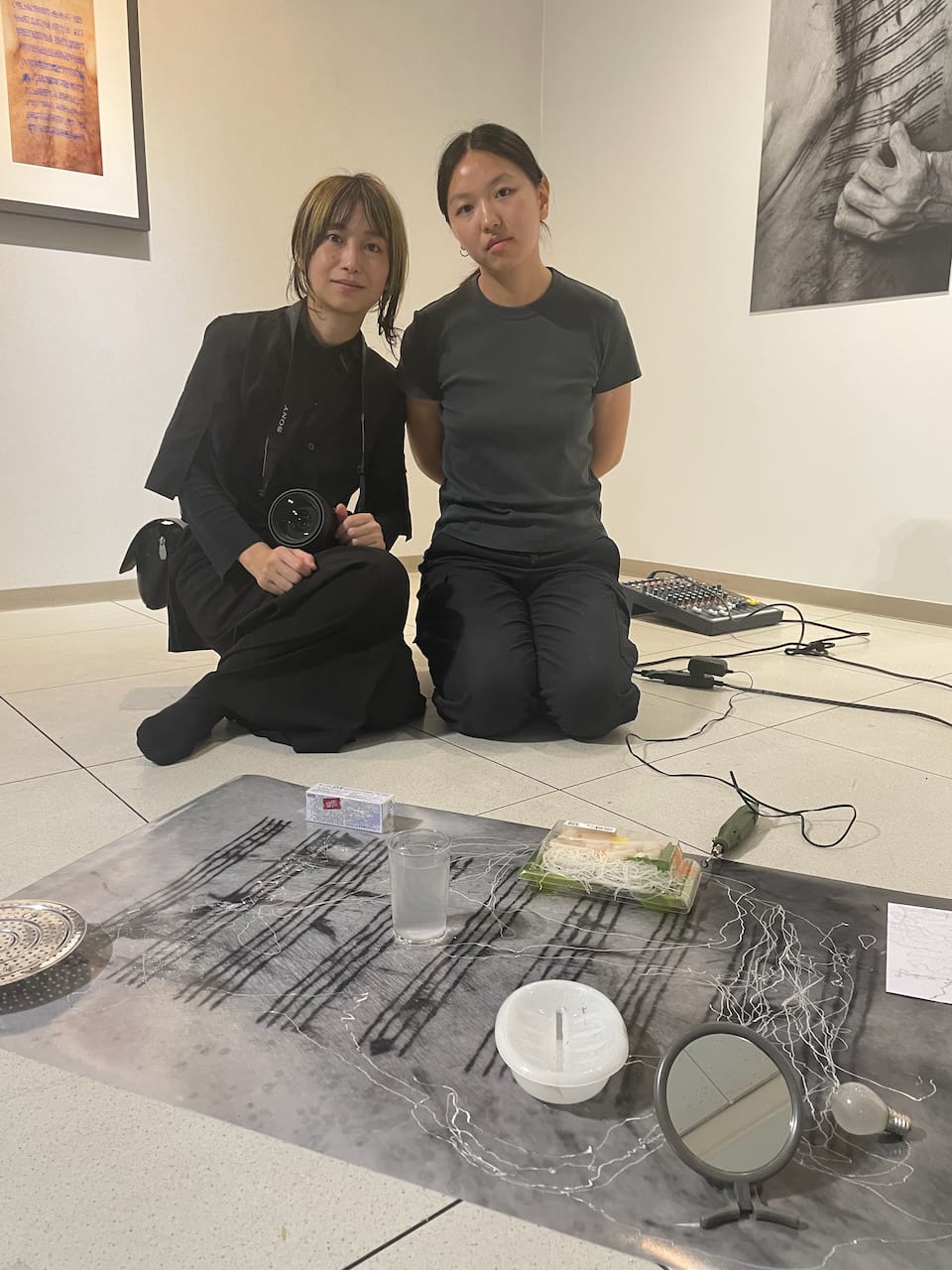
Yuri Miauchi and Ming Jing Yu
While in my apartment in Koganecho I listened to a guided meditation in which a quilt was used as a metaphor for one’s life. From the future, the meditation suggested, we will look back on our lives and there will be nothing that doesn’t fit or belong. Things that currently seem bad or wrong or to have lead us astray, we will see in the end, have made us who we are. It will all belong. There are no stains on the quilt of your life.
The meditation had a powerful impact on me, and the main thought stayed with me as I travelled back to Canada. I shared the experience with my Mother one night after dinner. Because I had an apartment in Koganecho, I had the opportunity to experience this meditation in Koganecho, and to then relay the experience to my Mother several weeks later and a few thousand miles away. Quilts were again in my heart and on my mind, as was collaboration, and sleeping, and embroidery.
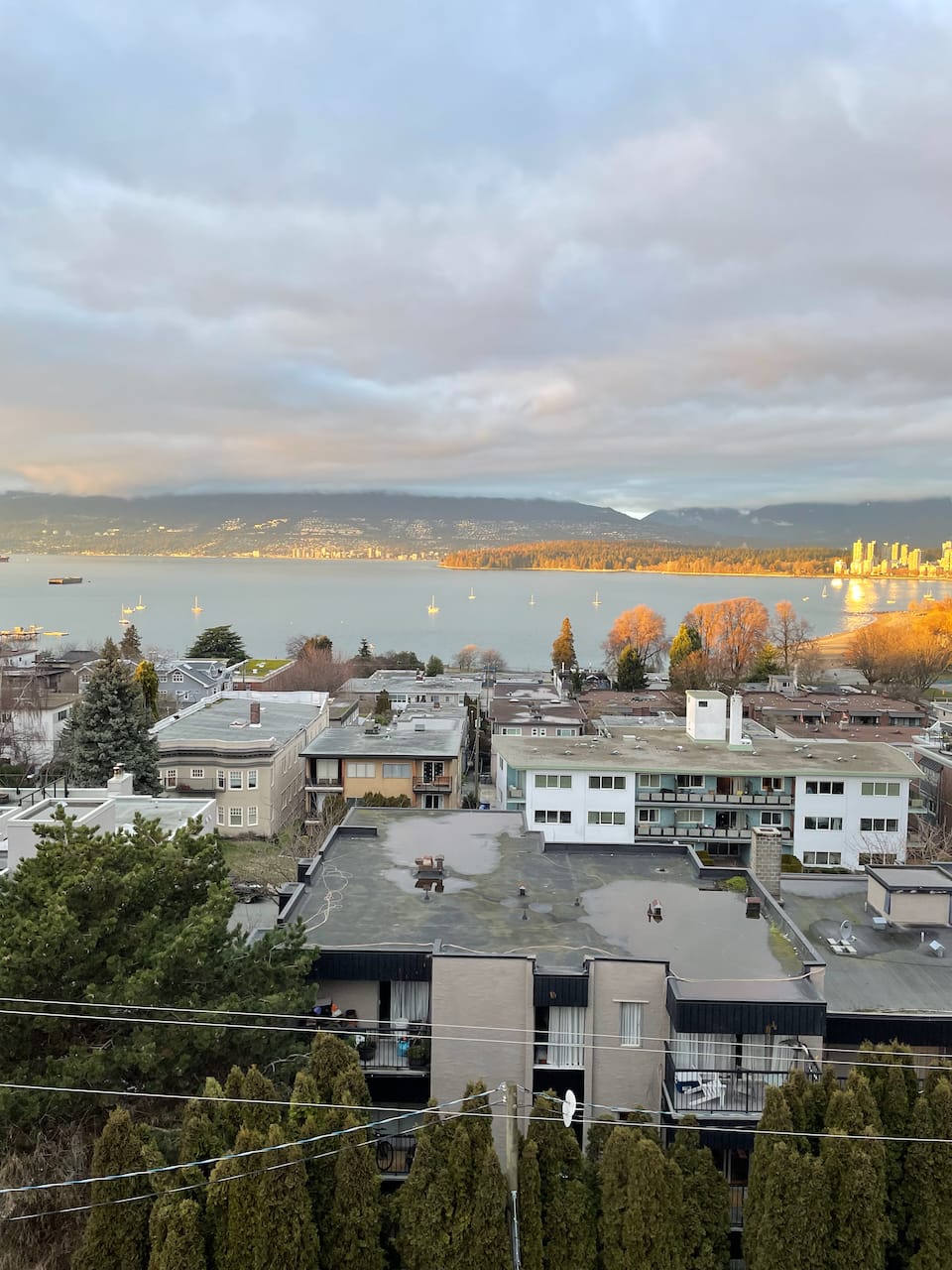
While in Canada I had been revisiting and journalling about beauty-pain and gratitude-grief. I had been carrying the experiences of my continual coming-into-being in Koganecho in my heart and mind. I was sitting at the kitchen table, in my Mother’s Kitsilano neighbourhood apartment, looking out over Burrard Inlet and the Vancouver’s North Shore Mountains. Without having planned to, I found myself talking to my Mother about a GratitudeGrief Quilt. It wasn't that I had been thinking about it, and then decided to communicate what I was thinking. The concept emerged as I spoke out loud about it. It was as though its inception came from outside of me. I felt responsible to this idea-from-outside-me, and since then have been responding to this sense of responsibility by pursuing the project's expression through my emplaced, entangled and continual coming-into-being.
What will the GratitudeGrief Quilt do?
The project gives people an opportunity and permission to experience embodied presence. To be present to each other, in an embodied way. To be part of each other’s coming-into-being by being present to each other’s continual unfolding.
If art is a verb, the verb in this instance is the coming-into-being of the participants who contribute to the making of the quilt.
From the collective and continual coming-into-being, a shared sense of possibility arises, which is different from a shared sense of problem solving. Abstracted problem solving makes complex, lived, embodied realities something to be fixed, or corrected, or made better. In contrast, a shared sense of possibility is a shared sense of the unfolding-of-the-world, made manifest through collective and communal labour, expression and care. A benevolent social fabric, is made real. The Gratitude Grief Quilt is the resulting artifact of the active labour, expression and care of a benevolent social fabric, coming-into-being.
Hey, I’m Steve, an artist-in-residence in Yokohama, Japan. I make collaborative art, participatory art, interactive new media installations, and abstract visual art. I explore themes of home, identity, belonging and how to live your life like a work of art. I write about it all in this very newsletter, Trembling Aspen.
I’m learning out loud so we can learn together.
If you would like to support me, my residency, my work, and this newsletter, or if you are interested in crowd-funding interdependent art-making in Yokohama, Japan, please consider subscribing.
